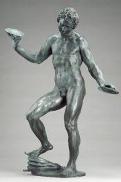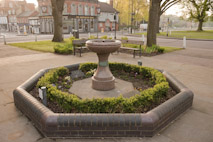Detailed Programme of Lectures 2024-2025
NEXT LECTURE .
June 18th
The Dancing Faun, a personal story of a masterpiece
Lecturer: Bertie Pearce

Bertie Pearce recounts the extraordinary
tale of how a small bronze statue, in his Grandfather’s garden for
40 years, was found to be a masterpiece, ending up in the Getty
Museum, California. Adriaen De Vries (c.1556-1626) a Northern
Mannerist sculptor and technical virtuoso born in the Netherlands,
created spectacular bronzes for discerning patrons, including Holy
Roman Emperor Rudolf II of Prague. He excelled in refined modelling
and bronze casting and in the manipulation of patina and became the
most famous European sculptor of his generation.

Remainder of the 2025 Lectures
July 16th
(AGM at 7.30)
The Golden Age of British Comedy
Lecturer: Tyler Butterworth
Tyler Butterworth, actor and son of the famous duo Janet Brown and Peter Butterworth, has appeared in many films and television. It’s said in our theatrical history that the 1970’s to the 1980’s was the Golden Age of British Comedy, a wonderfully rich period of shows, as we started to drift away from theatres and radios. Some say this period has never been bettered.
For the complete years programme click
here

